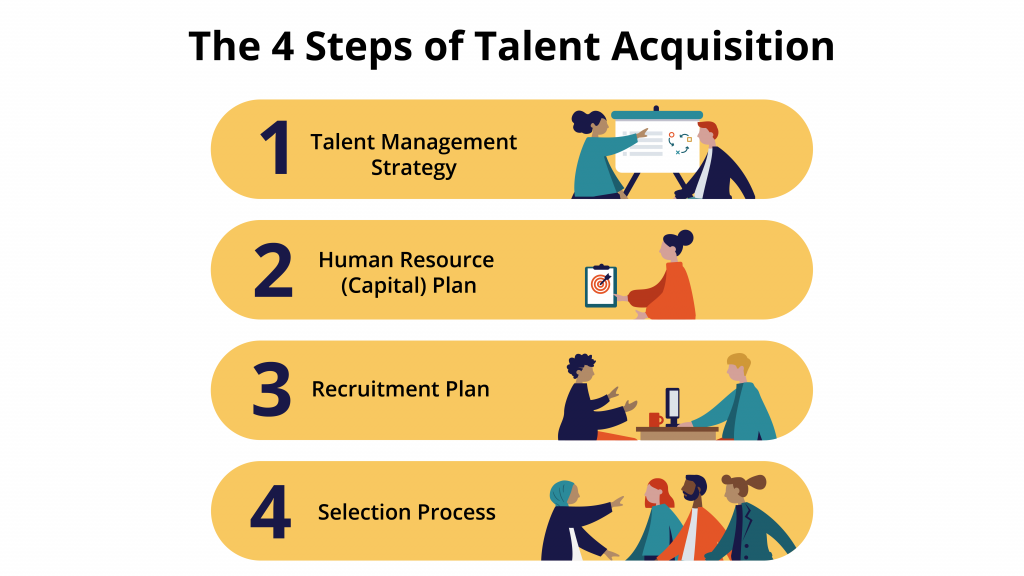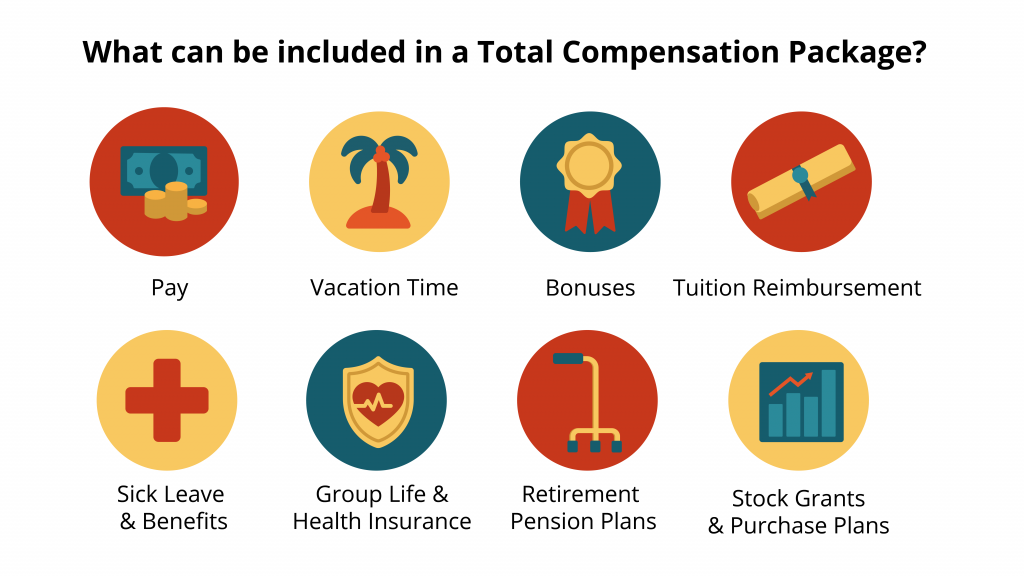1.2 HR Activities
The Human Resources function in a business is responsible for: job analysis and design, talent acquisition, training and development, performance management, compensation, labour relations and health and safety.
Job Analysis and Design
Organizations rely on the execution of numerous and varied tasks. These tasks, which are often carried out by employees, have to be structured in such a way to maximize efficiency. They should be clear and distinct from each other. They should also be performed by capable employees. HRM supports the definition, documentation and organization of these tasks through the processes of job analysis and job design.
Talent Acquisition
You need the right people to perform tasks and get work done in the organization. Even with the most sophisticated machines, humans are still needed, therefore, one of the major tasks in HRM is talent acquisition.. Talent acquisition involves the entire hiring process from posting a job to negotiating a salary package.
Within the talent acquisition function, there are four main steps:
- Talent Management Strategy
- Human Resource (Capital) Plan
- Recruitment Plan
- Selection Process

The dynamics of today’s business world and constant challenges ultimately equate to increasing demands on recruiting, selecting, training and retaining the necessary talent to compete. This is where HRM plays a critical role. There is no shortage of business challenges – these are forever changing and so to must the strategies, capabilities, processes and skills of HRM to keep pace.
The nature of work has changed dramatically in the past couple of decades. The ‘full-time one employer career’ of the past has given way to a ‘gig’ economy supported by a myriad of employment configurations – permanent part-time, fractional, contract, casual, on-call. As the business world and challenges evolve, so must HRM.
Hiring challenges persist in North America. Many employers continue to face a skills gap with a core focus on dependability and flexibility. It seems clear that employers need to focus both on attracting the right people and then keeping them in the organization. The COVID-19 situation placed even more stress and focus on employers as they struggled to fill positions and retain employees. Lockdowns, wage subsidies, and vaccination mandates are some examples of the issues during the COVID-19 pandemic that made employment more challenging for organizations.
Training and Development
Once we have spent the time to hire new employees, we want to make sure they are trained to do the job and continue to grow and develop new skills. This results in higher productivity for the organization. Training is also a key component in employee motivation. Employees who feel they are developing their skills tend to be happier in their jobs, which results in an increase of employee performance, productivity and retention.
Examples of training courses and programs might include the following:
- Job skills training, such as how to use a computer program
- Training on communication
- Team-building activities
- Policy and legal training, such as sexual harassment training, safety training and ethics training
- Time management skills
Performance Assessment and Management
Employee performance is a support role provided by HRM to the organization and management. HR has the responsibility of designing, maintaining and administering an organization’s performance management policies and systems. Basically, people have to be good at what they do. In a coffee shop, baristas have to produce a great cup of coffee, within a certain amount of time, and serve it to the customer in a pleasant manner. Every job is different and quite complex when you think of the different ways in which performance is defined. It is the role of the HRM professional to devise systems to measure this performance with precision and use this information to help the employee and the organization. Performance appraisal systems may include appraisal processes, annual employee performance appraisals, or performance improvement plans to name a few.
However, assessing performance is only the beginning. Once a measure of performance is obtained, the HRM professional uses it for multiple purposes, including:
- Provide feedback for employees
- Determine compensation (e.g., bonus, raise, etc.)
- Take disciplinary measures
- Support career development
Compensation and Benefit Administration
HRM professionals need to determine that compensation is fair, meets industry standards, and is high enough to entice people to work for the organization. Compensation includes anything the employee receives for his or her work. In addition, HRM professionals need to make sure the pay is comparable to what other people performing similar jobs are being paid. This involves setting up pay systems that take into consideration the number of years with the organization, years of experience, education, and also considers the results of external salary surveys, e.g., Hays Canada.
Total compensation (package) may include the following:
- Pay
- Group Life and Health Insurance
- Retirement pension plans
- Stock grants and purchase plans
- Vacation time
- Sick leave and benefits
- Bonuses
- Tuition reimbursement

Labour Relations
A labour union, also called a trade union or worker’s union, is an organization that represents the collective interests of employees. HRM professionals are involved in the negotiation (collective bargaining) and management of union contracts. These contracts typically cover compensation, work schedules, benefits, discipline, and other work-related processes. Unions are very prevalent throughout Canada. As such, an understanding of labour unions is very important to be effective.
Health and Safety

Safety is a major consideration in all organizations. Often times new laws are created with the goal of setting federal or provincial standards to ensure worker safety. Unions and union contracts can also impact the requirements regarding worker safety in the workplace. It is up to the Human Resource Manager to be aware of worker protection requirements and ensure the workplace is meeting federal, provincial, industry specific and union standards.
Worker protection issues might include the following:
- Chemical hazards
- Heating and ventilation requirements
- Use of “no fragrance” zones
- Protection of private employee information
HRM as an Integrated Set of Process
HRM relies upon a sophisticated set of integrated process to help the organization manage human capital. The effectiveness of HRM lies in how well integrated these processes are and how well aligned they are with the mission and strategy of the organization. For example, a new policy on workplace safety protocols will only be effective if employees are trained to understand and respect it. In addition, that policy has little chance of taking hold if it is not part of the performance appraisal process. Finally, in a unionized environment, any policy will have to be designed with the cooperation of the labour union so that it is integrated into the collective agreement.
“Human Resource Management: An introduction” in Human Resources Management – 2nd Ontario Edition by Elizabeth Cameron, which is licensed under a Creative Commons Attribution-NonCommercial-ShareAlike 4.0 International License, except where otherwise noted.

